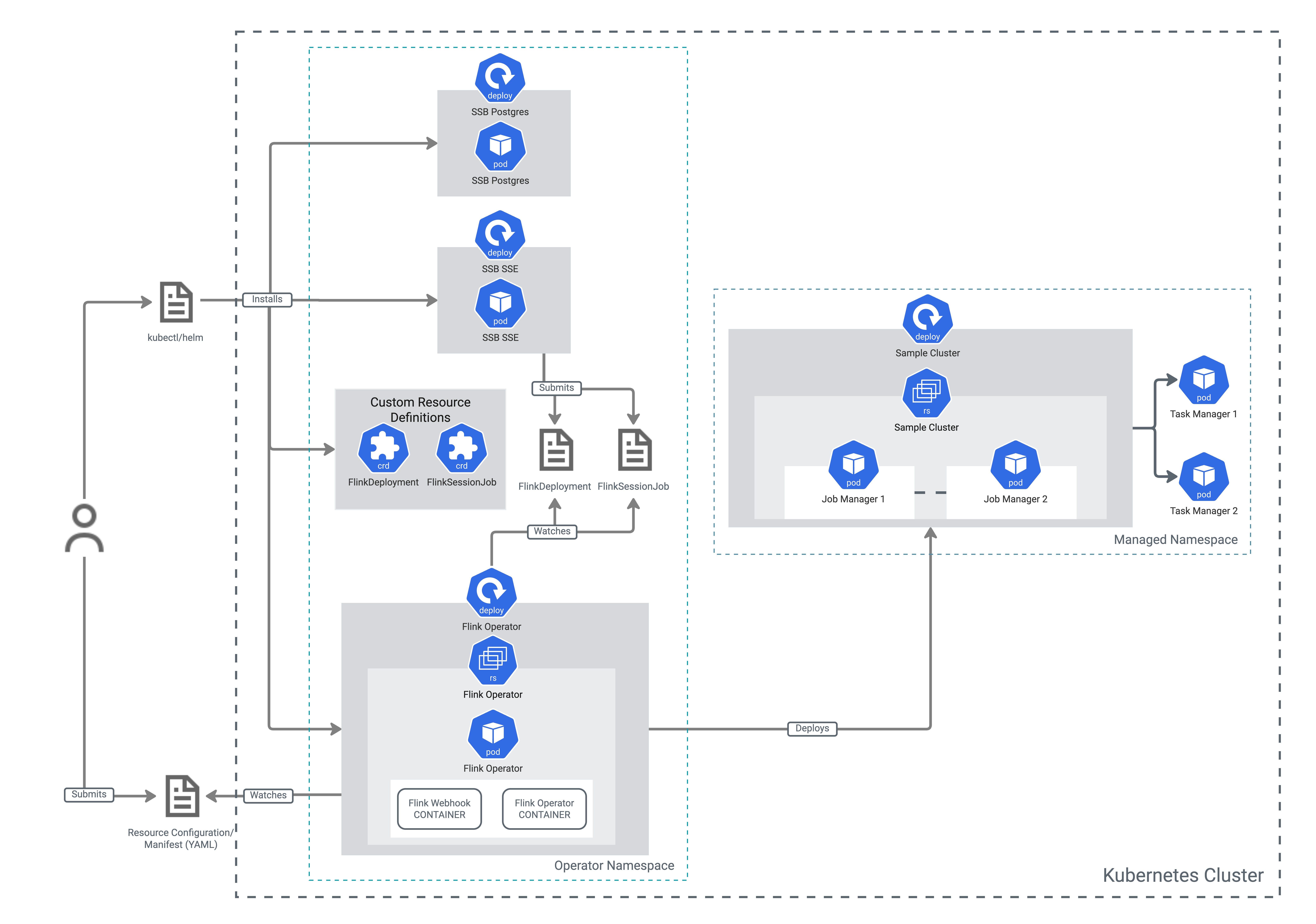Deployment architecture
Cloudera Streaming Analytics - Kubernetes Operator can be installed on a Kubernetes cluster using Helm. The installation of Cloudera Streaming Analytics - Kubernetes Operator creates the deployment of the Apache Flink Kubernetes Operator (Flink Operator), Flink Webhook, and registers the Custom Resource Definitions (CRDs) on the Kubernetes cluster. As an extension, built on top of the Flink Operator, Cloudera Streaming Analytics - Kubernetes Operator also deploys the Cloudera SQL Stream Builder engine (in Technical Preview) and its corresponding PostgreSQL database.

When installing the Cloudera Streaming Analytics - Kubernetes Operator with Helm, the Flink Operator Webhook is also installed as a custom admission plugin, which allows dynamic admission control. Similarly to connectors, you can use it to add plugins to the Flink operator that add custom rules triggered by certain actions.
There are two types of webhooks:
- mutating webhook: if you want to automatically configure some values on it or even force certain config values whenever a user creates a new FlinkDeployment, you can create a FlinkResourceMutator. Whenever a new FlinkDeployment is submitted, Kubernetes will call the webhook of the operator, and apply the custom mutator on the deployment.
- validating webhook: with this type, you cannot apply any changes to the deployment, but can automatically reject the creation of the deployment by implementing custom rules via the webhook.
The Flink Operator Webhook uses the TLS protocol to communicate by default, and automatically loads/reloads the keystore file when the file changes.
SSB integration - [Technical Preview]
Cloudera Streaming Analytics - Kubernetes Operator comes with seamless Cloudera SQL Stream Builder integration. Cloudera SQL Stream Builder is built on top of the Flink Operator, offering an interactive user interface for creating streaming SQL jobs.
Cloudera SQL Stream Builder is a comprehensive interactive user interface for creating stateful stream processing jobs using SQL. Using SQL, you can simply and easily declare expressions that filter, aggregate, route, and otherwise mutate streams of data. Cloudera SQL Stream Builder offers a job management interface that you can use to compose and run SQL on streams, as well as to create durable data APIs for the results.
The Helm chart contains the Cloudera SQL Stream Builder subchart, which has two deployments in the Cloudera Streaming Analytics - Kubernetes Operator: sse, which provides the engine and User Interface (UI), and postgres, which provides the default database for Cloudera SQL Stream Builder to function. When submitting a SQL job using the UI (Streaming SQL Console), the parsed SQL is serialized, compressed and encrypted into an environment and a Flink job is deployed. This means that, under the hood, Cloudera SQL Stream Builder creates the same Flink Deployment as you would for a generic Flink job, with the only difference that a special Flink job is created for the SQL Runner. The SQL Runner decrypts and decompresses the parsed SQL, sets up the environment inside the Flink job, and executes it. Cloudera SQL Stream Builder by default deploys the jobs in Session Mode. You can use the installed connectors in your SQL jobs as a source or sink with the supported data formats.
